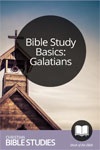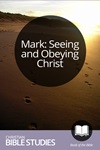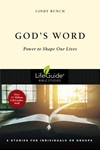I connect the season of Easter with a wide variety of images, symbols, and experiences. I think of the sun rising over an old stone fort in Saint Augustine, Florida, where my family spent our Easter vacations when I was a child. I also think of jelly beans, chocolate eggs, and marshmallow Peeps—the fervently hoped-for contents of my yearly Easter baskets.
Fortunately, my associations with Easter improved as I matured both in age and in relationship with Jesus. Christian themes and symbols began to dominate my experiences with the holiday—a crown of thorns, the skull-like mountain called Golgotha, and the empty tomb. I can vividly remembering taking part in my church's "Passion Play" where, dressed as a Roman soldier, I pantomimed nailing Jesus to a wooden beam and then lifted him onto the cross.
In recent years, however, the images I primarily connect with Easter have taken a decidedly different turn. The Chicago World's Fair comes to mind, for example. And an architect. A garden. A serial killer.
Maybe I should explain!
Two Types of Men
It was several years ago that I first read a book called The Devil in the White City, by Erik Larson. It's an excellent work of non-fiction, which on the surface tells the story of the 1893 World's Fair held in Chicago. But the real meat of the book revolves around two men—Daniel Burnham and Dr. H. H. Holmes—who used that event to set the course of the rest of their lives.
I'll let the book's author explain a little more, quoting from the Introduction:
In Chicago at the end of the nineteenth century amid the smoke of industry and the clatter of trains there lived two men, both handsome, both blue-eyed, and both unusually adept at their chosen skills. Each embodied an element of the great dynamic that characterized the rush of America toward the twentieth century. One was an architect, the builder of many of America's most important structures … ; the other was a murderer, one of the most prolific in history and harbinger of an American archetype, the urban serial killer.
As I read (and re-read) The Devil in the White City, I became fascinated by the juxtaposition of those two men—those two types of men, really.
Burnham, the architect, poured his soul into creating one of the most visually stunning manmade landscapes ever seen—a collection of white stucco buildings illuminated by electric light and overlooking the waters of Lake Michigan. Holmes, the murderer, built a monstrosity of an apartment complex. It contained hidden gas chambers and an enormous furnace. (I'll leave the rest to your imagination.)
Two types of men with two types of goals. Again, Erik Larson does a great job of articulating the contrasts they represent:
Beneath the gore and smoke and loam, this book is about the evanescence of life, and why some men choose to fill their brief allotment of time engaging the impossible, others in the manufacture of sorrow. In the end it is a story of the ineluctable conflict between good and evil, daylight and darkness, the White City and the Black.
An Ancient Garden
The events recorded in Matthew 26:36-56 also highlight this duality present in human nature. It's the story of the garden called Gethsemane.
Jesus was in that garden, of course, and was the most important person in the history of the world; the best person who has ever lived. In his perfection he poured out his soul to God the Father—preparing himself for his harrowing journey through the thorns, the whips, the beatings, the nails, the cross, the sins of the world.
Peter was in the garden, too, as well as James and John. But it's Peter that I focus on when I think about that moment. Peter, with his ambitions of greatness and buffoonish pride. Peter, who three times failed to pray with Jesus and take part in that glorious moment because he fell asleep. Peter, who in just a few hours would deny the man he had dedicated his life to follow, even though he'd been warned it was going to happen.
There were two men in the garden. One represented what human beings were meant to be, created in the image of a perfect God. The other represented what all of us have become.
A Gift for Everyone
We know what happened to Jesus after he was dragged away from that garden. He was slandered publically. He suffered terribly. He was drowned in our sin and cut off from his Father. He died. He endured all of this willingly, even though he had the power to walk away.
And then he lived again, bursting back into the world and offering all of us a chance to get rid of our sin and be clean, like him—a chance to choose life over death and join him in that White City called the kingdom of God.
The wonderful news is that we also know what happened to Peter after he left the garden. Yes, he denied Jesus three times, hitting rock bottom with a thud (as we all do). But he recognized it. He wept. He understood the difference between Jesus and himself.
And when Jesus came back, Peter was one of the first people to understand what kind of gift the Savior was offering. Peter was one of the first people to accept that gift—"Lord, you know all things; you know that I love you"—and he became something new. Someone new.
For me, Peter's story is the beauty of Easter. That scene in the garden reminds me of what I used to be—a total failure in terms of what God created me to be, and totally unaware of it. To use Erik Larson's words, I was "a harbinger of a human archetype, the sinner."
But the resurrection of Jesus on that first Easter morning—and what it meant for someone like Peter—reminds me of what I have since become. I am changed. I am new. And I am so grateful.
—Sam O'Neal is Managing Editor of www.SmallGroups.com.
Copyright © 2011 by Christianity Today/ChristianBibleStudies.com. Click here for reprint information.












